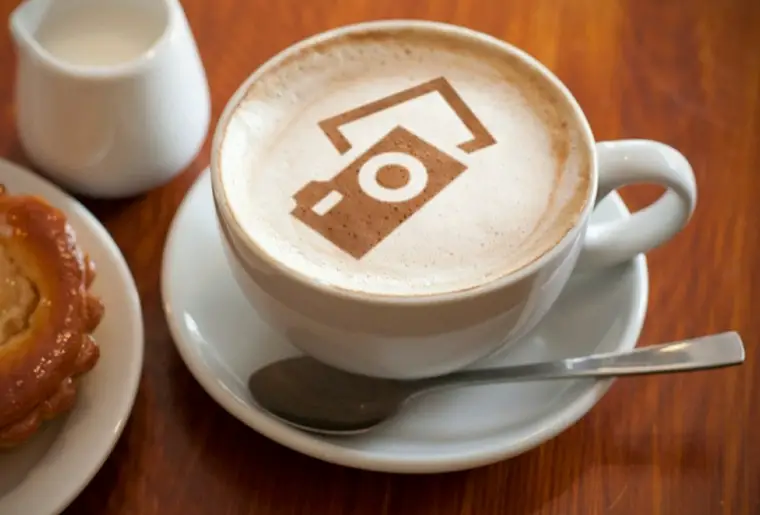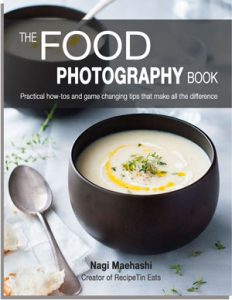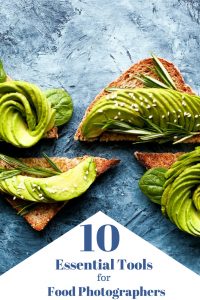 There are a few essential tools for food photography that you need to set up. While there are many more things these are what you need to get ahead in taking great photos of your food.
There are a few essential tools for food photography that you need to set up. While there are many more things these are what you need to get ahead in taking great photos of your food.
Food Photography Tools
Below is a list of the tools you need to set up your food photography. If you already have some of these but they are not quite right for food photography and don’t want to update it pays to invest in the things you really need first.
DSLR Camera Body
Whether it be a Canon, Nikon or another make camera you will need a camera of some kind that you feel comfortable using and does the job. I love my Canon, but you may find you prefer something else. It is best to get what suits you as you will spend a lot of hours using it if you want to learn food photography well.
I often cringe when I read the camera recommendations for any photography, you wait in anticipation and the advisors nearly always says the same the XXX is the best. And they are right it probably is the best, it is also usually £/$1,000s. Cameras today are amazing, even the small point and shoot can give you great results. However, if you are serious you need at some point to get a decent camera. That doesn’t mean you have to pay an arm or a leg for it.
Your technique and knowledge will go a long way if you can get a top of the range camera go for it, if not go for what you can afford and learn your craft. Good setup and lighting and composition etc will give you great results. As a food photographer, you are shooting still anyway so you do not need a super fast camera.
Below I have included a camera at each level for you to compare the quality, weight and functions. It is important that you feel happy with your camera choice. When you are starting out you may prefer to start with the entry or mid-range cameras.
**Everything below is easily available to check out on Amazon unless stated.
Pro Range
This is a beautiful piece of kit. It is perfect for food photography as it has outstanding still life abilities and image quality which is one reason I picked it. It also has over 30MP and a full frame sensor. I love that it has a large screen.
Mid-range or Semi-Pro
The Canon 77D & 80D are good mid-range cameras. The difference between these and the entry levels is one is they are good quality. They are also very easy to use. They have 24.2 Megapixels for your images.
Entry Level
The 800D is an entry-level camera as are all the ’00D ranges they are also the Rebel class. These are perfect for beginners.
50mm Lens
For food photography, the most recommended lens is a 50mm prime lens. Fixed focus lenses give clearer images than a zoom. When it comes to lenses it is a good investment to pay the extra money if you can and get the best quality you can afford. This is because this is where the quality of your picture is. Ideally, you also want an aperture of 1.8 as you may often be shooting in low light conditions so it helps to have this setting. If you need to there are some great lenses out there that are not branded as well.
If you are using a cheaper camera be aware that they crop the image.
Sturdy Flexible Tripod
This is the Vanguard Alta Pro it is a great value sturdy tripod that is ideal for food photographers.
Lighting & Soft Boxes
Reflectors & Defusers for Light Control
Reflectors come in different shapes, sizes and colours. You can get, round, triangle and rectangle ones. You will need both reflectors and defuses for your pictures. You can use makeshift ones however they are not that expensive to buy in the scheme of things. The round ones are the most popular to buy. But it really depends on what suits you.
Sponge Boards or Alternative
Editing Software
The great thing about this is it is a one-year licence package so you can try it out and see if this is the right package for you. There are also lots of tutorials to help you.
Learn Your Craft With Food Photography Books
 To make your photography the best you can you will need tutorials. The Food Photography Book is a complete guide on food photography. It shows you everything you need form starting out and learning what equipment you need to how to use it and specifically on how to use it taking food shots. And how to set up and light your food.
To make your photography the best you can you will need tutorials. The Food Photography Book is a complete guide on food photography. It shows you everything you need form starting out and learning what equipment you need to how to use it and specifically on how to use it taking food shots. And how to set up and light your food. Click here to view more details
Memory Card
Remote Release Switch
Computer Tether
In Conclusion
This is the main kit you will need to take your food photography to the next level. If your budget doesn’t run to everything then start out with great foundations of camera and lens and work from there.











